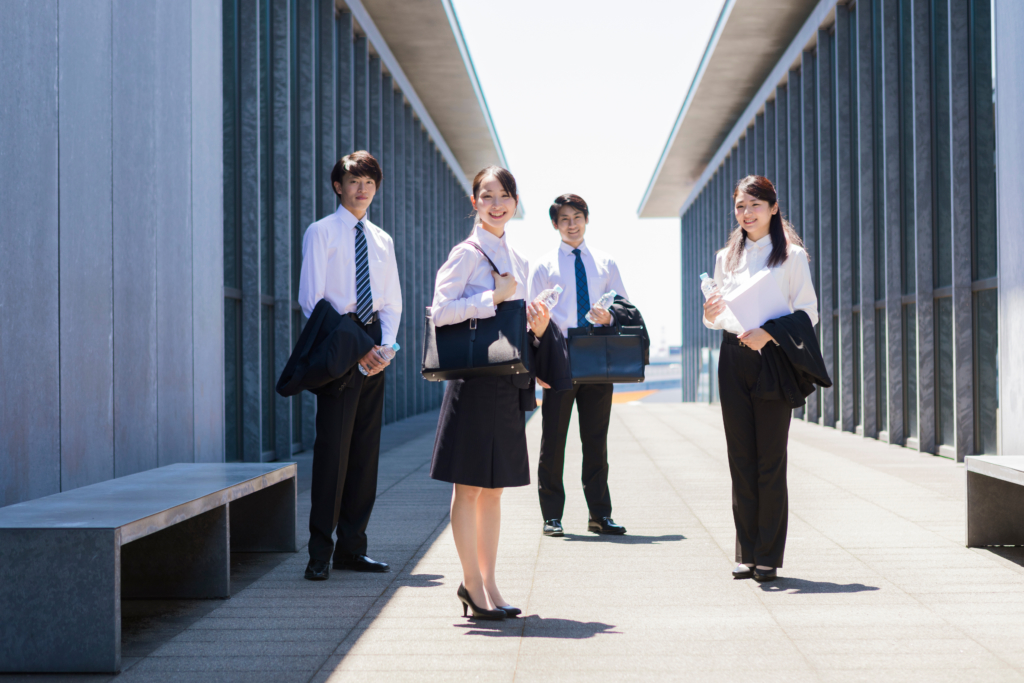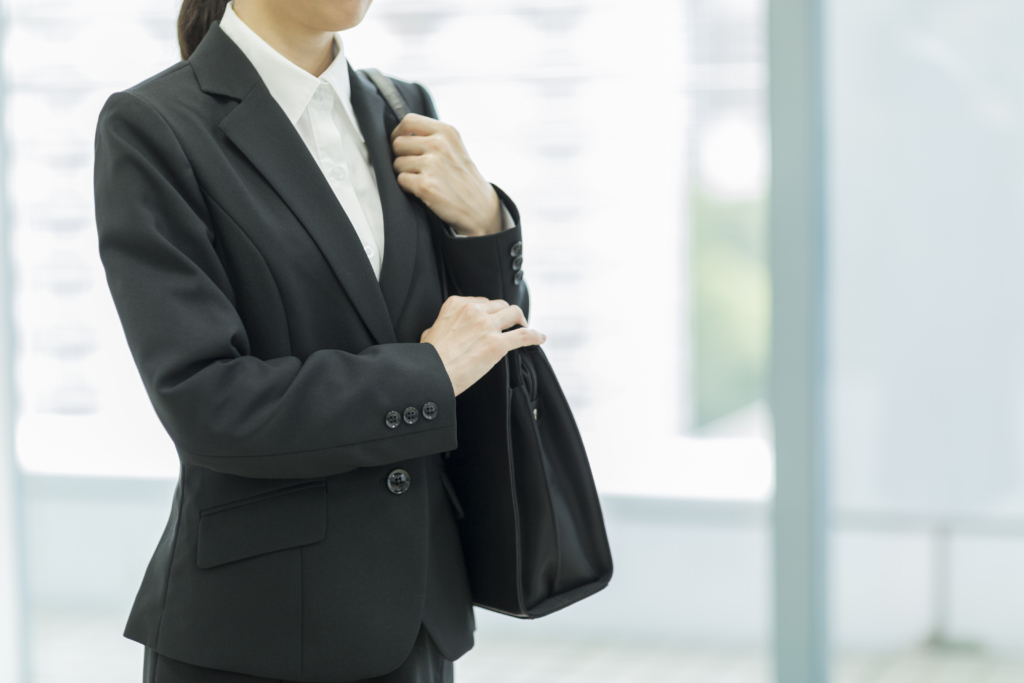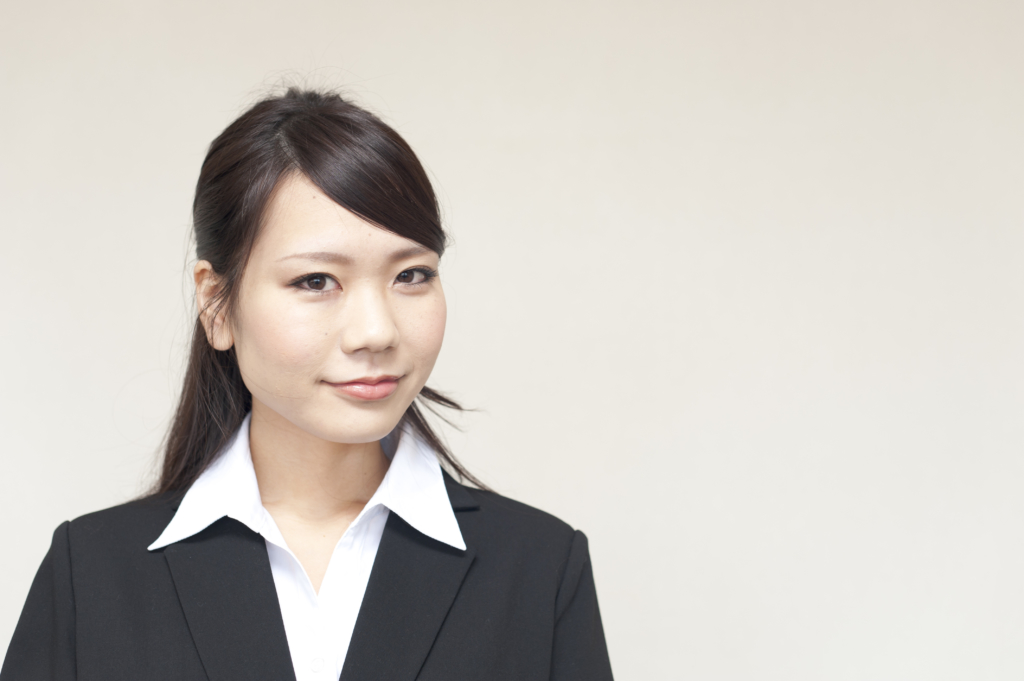After submitting dozens of applications, you finally get invited to an interview in Japan. Congratulations! One question that frequently gets asked once job seekers make it to this stage of the game is: What should I wear? Japan is a country that takes presentation seriously, and this extends to interviews. This can make figuring out what to wear surprisingly nerve wracking. But that’s okay, we are here to help. In this article, we reveal what you should normally wear to an interview if you’re female and applying to a Japanese company.
The Recruitment Suit

When we talk about office attire, many instantly think of suits. In Japan, they come in two main varieties:
• The Business Suit: worn by employees during work hours.
• The Recruitment Suit: worn by job seekers, especially those with little to no work experience.
Now, if you’re not sure what to wear to a job interview in Japan, you’re probably fairly new to the working world. So, you’ll want to get the recruitment suit.
The price of a recruitment suit varies depending on the maker. You can most certainly get a top-dollar recruitment suit, and we’re sure it’ll look great on you. However, since they’re meant for those with little to no work experience, you won’t be using the suit for very long. So, we recommend you get a recruitment suit that costs somewhere between 10,000 and 30,000 yen. You can get one at a specialty shop such as AOYAMA, AOKI, Suit Select, KONAKA, The Suit Company, or any other Japanese supplier of office attire. There are plenty to choose from.
Store employees will, of course, happily help you find a suit that best fits your needs, but if you want a little more information before going in, or if you want to do it all on your own, then this guide should tell you everything you need to know about recruitment suits for women.
1. Color and Pattern

The most popular color and pattern for recruitment suits is plain black, but if you worry that it will make you look dull and unattractive, other colors in deeper tones such as charcoal grey and navy are also acceptable. They’ll make you look more cheerful while also being appropriate for business settings.
However, bright colors such as light grey, beige, and white are considered too fashionable and distracting, so we recommend avoiding them.
2. Style

Recruitment suits for females usually sport one to three buttons. Choose whichever style works best for you. Also, note that these suits are specially made to fit the female figure and don’t have to be unbuttoned for the wearer to be comfortable when sitting down. Ensure you sit down in a fully buttoned suit to see how it looks and feels before making a purchase.
3. Sleeve Length

The sleeve length of the jacket and the shirt is of vital importance. They might seem like small details, but in Japan where thousands of candidates wear similar outfits, they do stand out. The edge of the suit jacket sleeves should be around your wrists and cover your shirt sleeves entirely or close to it.
4. Tips For Choosing a Business Shirt
For ordinary business attire, women can wear collarless shirts beneath the suit jacket. However, recruitment suits require a plain white shirt with a collar. There are two types of white business shirts to choose from. The first one is the general type where the top button allows you to close the collar completely around your neck, and the other is the “skipper collar” type without a top button. The latter keeps the collar open and definitely makes a statement while also being business appropriate.
While job hunting, you should not reveal too much of your neck area, as it might be considered too outgoing and inappropriate in Japan. Also, don’t forget to wear an undershirt as well because white shirts can be quite see-through.
5. Skirts vs. Pants

In general, Japanese women pair their suit jackets with skirts. However, many have been turning to pants in recent years as they are more flexible, comfortable, and offer a wider range of movement. You should still consider your options carefully by first making sure what your company’s preferences are, as some firms are still pretty conservative when it comes to female business attire.
If you pick a skirt, we recommend you go for something that’s not too tight or too short. When you sit down, the hem shouldn’t go up more than 5 cm above your knees. As for pants, they should reach all the way down to your heels or stop no more than 2 cm above them. You’ll also need a belt for your pants for a more professional look. The belt should be 2 – 2.5 cm wide and preferably made from black leather so that it blends with your outfit and doesn’t become a distraction.
6. Stockings
The best stocking color for a business setting in Japan is plain nude. Black is seen as provocative or funeral attire. If you’re job hunting during the colder months, we recommend wearing two layers of nude stockings or going with pants instead of a skirt.
7. Shoes

Plain black heels are the most suitable shoes for job hunting in Japan. The ones with a top strap are also acceptable. The heels should not be too high, with around 5 cm being perfect, which is the height you’ll usually find in specialty business attire stores. Please also make sure that the heels are thick enough to allow you to walk with grace and confidence.
8. Bag

You will have to bring many documents with you to a job interview. That’s why you should choose a bag that can fit many copies of A4-sized paper. Also, you may have to put your bag down during the interview, so we recommend that you pick something that can stand on its own.
In the picture above, you can see that the bag is made from a sturdy material, which, together with the studs at the bottom, allows it to stand on its own. This is a perfect example of a bag suitable for job interviews.
9. Hairstyle

Many Japanese companies still don’t have a favorable opinion on dyed hair, so if you have hair dyed in a clearly unnatural color, it might be worth changing that. People with long hair need to tie them up in a ponytail or a hair bun, while shorter, parted hair should be held in place with hairpins for a neat clean look. This is important because you will need to bow many times during a job interview in Japan, and if you keep tucking your hair behind your ears every time, it might leave a bad impression on the interviewer.
As for people with bangs, you may need to style them a little with hairspray, but you’re not expected to reveal your entire forehead.
10. Makeup

You should wear light, natural makeup to a job interview. No makeup will make you look unprofessional, but too much makeup is just as bad. Just put on your foundation, blush, and a bit of lipstick to make yourself look presentable.
The Suit Is the First Step
We hope that you found this guide to Japanese female business attire helpful. If you found some of these rules a bit too strict, the good news is that more companies are slowly loosening up, favoring the words and actions of the candidate over their attire. A job interview is not only for the company to judge you, but for you to judge the company and role, so we recommend not seeking out incredibly traditional companies if you don’t want to abide by all the points described above. Good luck with your job hunt!
If you want to give feedback on any of our articles, you have an idea that you’d really like to see come to life, or you just have a question on Japan, hit us up on our Facebook!
The information in this article is accurate at the time of publication.



